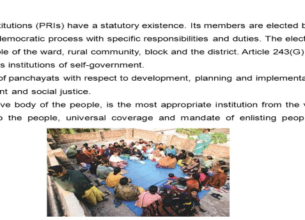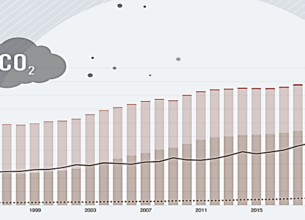PRELIM SNIPPETS – December 29th 2021
1.Typhoon Rai
Why in News?
- The official death toll of Typhoon Rai (locally named Odette) which hit parts of the Philippines in mid-December, was raised to 388.
Highlights:
- It is the strongest storm to hit the disaster-prone archipelago this year (2021).
- Typhoons are a kind of storm. The storms, depending on where they occur, may be called hurricanes, typhoons or cyclones.
- Typhoons – China Sea and Pacific Ocean.
- Hurricanes – West Indian islands in the Caribbean Sea and Atlantic Ocean.
- Tornados – Guinea lands of West Africa and southern USA.
- Willy-willies – north-western Australia and
- Tropical Cyclones – Indian Ocean Region.
- The scientific name for all these kinds of storms is tropical cyclones.
- Tropical cyclones are intense circular storms that originate over the warm tropical oceans with speed more than 119 kilometres per hour and heavy rains.
- Tropical cyclones rotate counter clockwise in the Northern Hemisphere.
- The Regional Specialized Meteorological Centre (RSMC) Tokyo – Typhoon Centre assigns a typhoon a name. The name ‘Rai’ is contributed by Micronesia.
2.Green Financing
Why in News?
- Recently, the Prime Minister of India COP26 climate summit announced that India will attain net zero emissions by 2070.
Highlights:
- In order to meet these climate targets, countries like India will need approximately USD 1 trillion in additional financing over the Next Ten Years
- Green financing is to increase the level of financial flows (from banking, micro-credit, insurance and investment) from the public, private and not-for-profit sectors to Sustainable Development Priorities.
- A key part of this is to better manage environmental and social risks, take up opportunities that bring both a decent rate of return and environmental benefit and deliver greater accountability.
- The ‘polluters pays’ principle is the commonly accepted practice according to which those who produce pollution should bear the costs of managing it to prevent damage to human health or the environment.
- Common but Differentiated Responsibility and Respective Capability (CBDR–RC) is acknowledges the different capabilities and differing responsibilities of individual countries in addressing climate change.
- Green financing related to climate change is majorly mobilised from National Clean Energy Fund (NCEF) and National Adaptation Fund (NAF).
3.State of India’s Livelihood (SOIL) Report 2021
Why in News?
- The State of India’s Livelihood (SOIL) Report 2021 has stated that just 1-5 % of Farmer Producer Organisations (FPOs) have received funding under central government schemes introduced to promote them in the last seven years.
Highlights:
- Access Development Services, a national livelihoods support organisation has prepared the SOIL report.
- It has analysed only Farmer Producer Companies (FPC — FPOs registered under The Companies Act, 2013) since they make up a large majority of the organisations started in recent years.
- The number of FPOs registered as cooperatives or societies is very small
- The concept of ‘Farmer Producer Organisations (FPO)’ consists of collectivization of producers especially small and marginal farmers so as to form an effective alliance to collectively address many challenges of agriculture such as improved access to investment, technology, inputs, and markets.
- FPO is one type of Producer Organisation (PO) where the members are farmers.
- A PO is a legal entity formed by primary producers, viz. farmers, milk producers, Fishermen, weavers, Rural Artisans, Craftsmen.
- The average farm size declined from 2.3 hectares (ha) in 1970-71 to 1.08 ha in 2015-16. The share of small and marginal farmers increased from 70% in 1980-81 to 86% in 2015-16.
- FPOs can engage farmers in collective farming and address productivity issues emanating from Small Farm Sizes.
- Further, this may also result in additional employment generation due to the increased Intensity of Farming.








